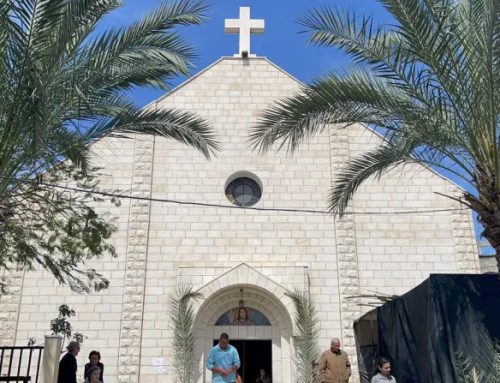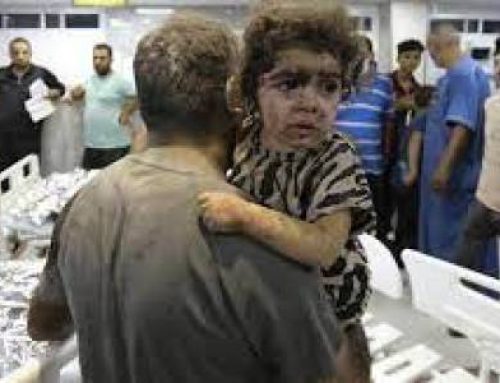Living Easter in the Holy Land means to see first-hand the places of the life and Resurrection of Christ, breathing the origin of the Christian faith.
In the land where God became man, a solemn and shared atmosphere is experienced during this period of Lent.
All the pilgrims who follow the Christian celebrations in the Holy Land report deep and fascinating testimonies; for this reason, among the multiple good reasons to spend Easter in the Holy Land, we have selected five.
The Holy Places
The first reason we propose you is certainly represented by the unique charm emanating from the Holy Places. Solemn celebrations have never ceased to adorn the Holy Land and attending a mass or simply visiting one of the many churches that beautify Jerusalem is a unique and deep experience.
Living the days of the Holy Week in Jerusalem, the sacred city for Christians, Jews, and Muslims, allows you to empathize in the Mistery that took place more than 2000 years ago and to walk on the places described in the Gospels.
Sustainable tourism
The second reason we would like to suggest for spending Easter in the Holy Land is the possibility of participating in a form of sustainable tourism. There are a lot of inhabitants who live off tourism. In particular, the Holy City of Jerusalem, is the most visited city ever and in 2019 it saw more than 4 million tourists passing through its centuries-old gates.
Sustainable tourism is very important, therefore, staying at our Guesthouses will allow you to give a concrete and valuable help to the local community, as well as living a unique experience. The pro Terra Sancta Association manages four Guesthouses: the first one is Dar Mamilla, which is located just outside the walls of Jersalem; in the historic centre of Bethlehem there is Dar al Majus; a few steps from the Church of the Nativity there is the Guesthouse Dar al-Sideh and finally, among the green hills of Samaria, the picturesque Mosaic Guest House.
The Terra Sancta Museum
Let’s move to the third reason. Along the Via Dolorosa stands an ambitious and interesting project to visit during the Easter season: the Terra Sancta Museum. In the heart of the Old city, it represents the first museum in the world on the roots of Christianity and the preservation of the Holy Places.
The purpose of the archaeological museum is to enhance the places where Jesus spent his earthly life. Have you ever imagined what dishes Jesus might have used for the Last Supper? Or how the everyday tools were made in the first century? You will find all of this at the Terra Sancta Museum, so you can immerse yourself in the same experiences as Christ.
Moreover, the archaeological and artistic collections are unique in the world and also tell the story of the Christian presence in the Holy Land. At the Museum, visitors not only return home enriched with new historical and archaeological knowledge, but also with a unique experience of cultural growth. In this huge building, in fact, pilgrims can experience a great opportunity for education and involvement in the local community and create an occasion for dialogue.
Over the years, the Museum has welcomed thousands of tourists and pilgrims of various nationalities, Arabic and Hebrew speaking residents, priests and lay people, archaeology experts, students, and professors.
It is an internationally-oriented place, as the city that welcomes it, and it is addressed to all those who want to deepen the unique value of Jerusalem and the Holy Land.
The weather
Fourth reason: the weather factor. Yes, because if it’s true that Jerusalem is splendid every day of the year, it is also true that all the tourist guides of the Holy Land agree in recommending April and October/November as the best months to visit the Holy City. In these months, in fact, the climate is warm and pleasant. It rarely rains and, particularly in April, temperatures fluctuate on average between 18° and 25°. In short, neither too hot nor too cold. The ideal period.
The Easters of Jerusalem
Jerusalem is a crossroads of peoples in which you come across every street every day. The last reason we propose is the meeting with other religions and confessions that live in this Holy Land. In Jerusalem, it would ne more correct to speak of “Easters”. Besides the Christian one, there is also the Jewish one, or Pesach. Pesach means “to pass over”, in reference to God who spared the Israeli children on the night of the plague against the Egyptian people. The Jewish Easter begins on the 15th of the Nissan month, which is April, and lasts eight days. Pesàch is a very important feast for the Jews, because it remembers the liberation of the Jewish people from the slavery of Egypt.
If for the Jews Easter is a celebration that commemorates freedom, for Christians Easter celebrates the Resurrection of Christ. On Easter day, at the Holy Sepulchre, the Patriarch makes his solemn entrance followed by the Pontifical Mass and the solemn procession. In the afternoon, people take part in the daily procession along the streets of Jerusalem.
We are waiting for you to meet these and countless other realities made of the living stones of the Holy Land. The doors are finally open.
Book your visit on: visit@proterrasancta.org






